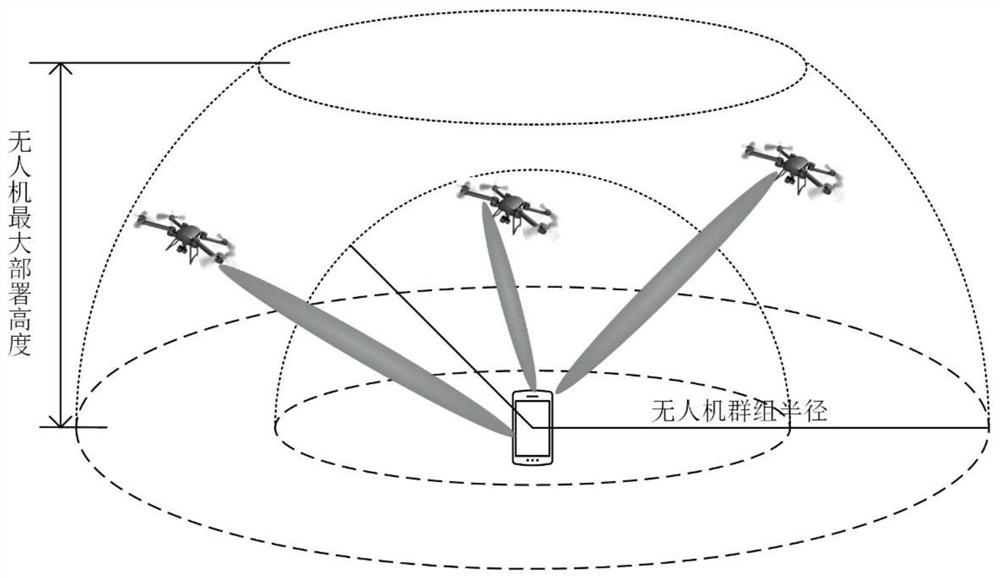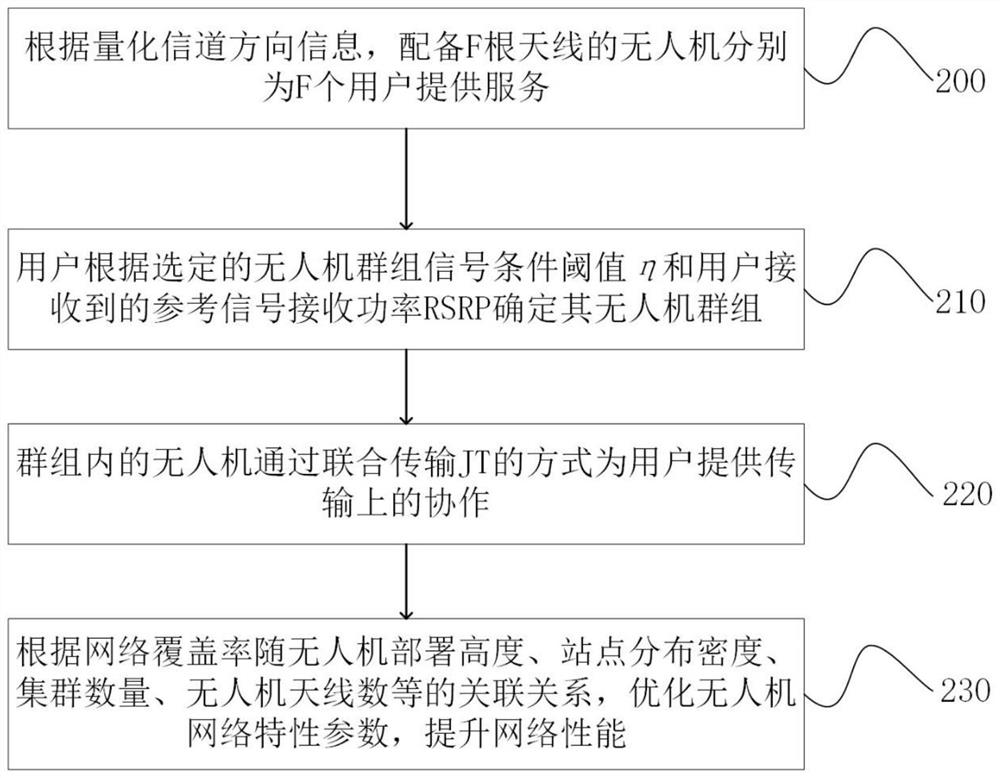User-centric unmanned aerial vehicle base station multi-beam joint transmission method
A joint transmission and unmanned aerial vehicle technology, applied in the field of wireless communication, can solve problems such as reducing user signal-to-noise ratio, increasing unmanned aerial vehicle co-frequency interference, and data fluctuations
- Summary
- Abstract
- Description
- Claims
- Application Information
AI Technical Summary
Problems solved by technology
Method used
Image
Examples
Embodiment Construction
[0024] The implementation method of the present invention will be described in detail below in conjunction with the accompanying drawings.
[0025] figure 1 It is a schematic diagram of the user-centered UAV base station multi-beam joint transmission method of the present invention. The network dynamically builds a user-centric UAV group for users, and collaborates on transmission within the group. As the user moves, the user's service drone group is constantly updated dynamically.
[0026] Each UAV station is equipped with F antennas, and provides services for F users respectively according to the downlink channel state information CSI. The user determines the UAV group Φ based on the selected UAV group signal condition threshold η and the reference signal received power RSRP received by the user v . Consider the UAV LOS / NLOS link characteristics, the probability of line-of-sight and non-line-of-sight can be modeled as a function of UAV elevation angle,
[0027]
[...
PUM
 Login to View More
Login to View More Abstract
Description
Claims
Application Information
 Login to View More
Login to View More - R&D
- Intellectual Property
- Life Sciences
- Materials
- Tech Scout
- Unparalleled Data Quality
- Higher Quality Content
- 60% Fewer Hallucinations
Browse by: Latest US Patents, China's latest patents, Technical Efficacy Thesaurus, Application Domain, Technology Topic, Popular Technical Reports.
© 2025 PatSnap. All rights reserved.Legal|Privacy policy|Modern Slavery Act Transparency Statement|Sitemap|About US| Contact US: help@patsnap.com



